Description
Real-World Use & Application Scenarios
In highly demanding industrial automation environments, the ABB PM862K01 controller is a key player that engineers turn to for reliable and resilient control solutions. Commonly deployed in industries such as power generation, oil and gas, chemical processing, and water treatment, it addresses the stringent needs for continuous process monitoring and precise control. Industrial automation systems rely on these controllers to manage critical parameters like pressure, flow, and temperature with minimal latency and maximum uptime. Its use is especially vital in sectors where operational safety and real-time response can directly influence production quality and environmental compliance.
This product finds its place in control systems requiring scalable architectures and high availability, making it a popular choice for process plants operating 24/7. The ABB PM862K01 is applicable in distributed control systems (DCS) where integration with field instrumentation, redundancy handling, and fault diagnostics are essential. By facilitating seamless communication across plant subsystems and networks, it helps tackle complex automation challenges and supports both batch and continuous processes. Its design enables direct connection to ABB’s 800xA control platform, ensuring that system integrators and engineers can build robust, future-proof automation solutions.
- PM862K01
- PM862K01
Product Introduction & Positioning
The ABB PM862K01 is a processor unit designed for ABB’s AC 800M control system, part of the widely respected 800xA Distributed Control System family. It functions as the CPU backbone, responsible for executing control logic and coordinating data exchange between the operator workstations and field devices. The unit is engineered to provide robust, high-speed processing tailored to complex industrial automation needs.
Fitting snugly into control system architectures, the PM862K01 offers built-in redundancy features, allowing it to be configured in dual-processor setups for enhanced system availability. It uses a 67 MHz MPC866 processor paired with 32 MB RAM, optimizing performance for high-speed Boolean operations and multitasking. The controller supports an array of protocols including Ethernet, PROFIBUS DP, and standard serial interfaces, ensuring broad compatibility with existing plant infrastructure. Engineers value the ABB PM862K01 for its modularity, reliability, and seamless integration capability within the ABB 800xA ecosystem, empowering them with scalable precision control.
Key Technical Features & Functional Benefits
Powered by a 67 MHz MPC866 processor, the ABB PM862K01 delivers swift execution of control programs with Boolean operation speeds of 0.18 milliseconds. Its 32 MB RAM, with approximately 23.5 MB available for application use, supports complex control tasks and multitasking demands typical in industrial environments. Dual RJ45 Ethernet ports provide redundant, high-integrity connections to the control network, bolstering communication reliability and network uptime.
The controller incorporates two RS-232C serial ports—one equipped with modem control signals and another isolated port for configuration tools—enabling robust device connectivity and flexible integration options. The PM862K01 supports CPU redundancy, enhancing availability via fault-tolerant operation in multi-CPU control systems. Physically, it features a compact form factor designed for DIN rail mounting with a streamlined slide and lock mechanism, allowing straightforward installation and maintenance.
Built to withstand industrial conditions, the PM862K01 operates within an ambient temperature range of +5 to +55 degrees Celsius, with protection against dust and electrical noise. Conformance with IP20 protection class and full electromagnetic compatibility certification ensures stability under challenging conditions. Safety certifications including ISA Secure and compliance with IEC 61131-2 standards underscore its suitability for regulated and safety-critical applications. The modular architecture supports expansion via ABB’s CEX-Bus and Modulebus communication interfaces, making the ABB PM862K01 a durable, scalable choice for complex control infrastructures.
Detailed Technical Specifications
| Parameter | Value |
|---|---|
| Model | ABB PM862K01 |
| Brand | ABB |
| Product Type | Processor Unit / Controller Module |
| Processor Type | MPC866, 67 MHz |
| RAM Available for Application | 23.521 MB out of 32 MB |
| Flash Memory | 4 MB for firmware storage |
| Power Supply | 24 V DC (19.2–30 V DC) |
| Power Consumption | Typical 210 mA, Max 360 mA |
| Operating Temperature | +5 to +55 °C |
| Mounting | DIN rail, slide & lock mechanism |
| Dimensions (W x H x D) | 119 mm x 186 mm x 135 mm |
| Weight | Approximately 1.2 kg |
| Interfaces | 2 Ethernet ports (RJ45), 2 RS-232C ports |
| Environmental Rating | IP20 |
| Certifications | ISA Secure, IEC 61131-2, EN 61000-6-4, EN 61000-6-2, cULus Class 1 Zone 2, DNV-GL Certified |
Related Modules or Compatible Units
ABB PM861K01 – Basic CPU model within the AC 800M family designed for standard control applications.
ABB PM866 – A higher performance CPU module with greater processing power in the same product line.
CI854A PROFIBUS DP Interface – Enables industrial network communication via PROFIBUS protocol.
CI860 FOUNDATION Fieldbus Interface – Facilitates connectivity for Foundation Fieldbus field devices.
CI855 MB300 Interface – Enhances compatibility with ABB’s communication protocols and devices.
CI856 S100 I/O Interface – Expands local I/O module support for broader control capabilities.
ABB TU516-H Hot Swap Terminal Unit – Provides functionality for hot-swappable I/O modules without downtime.
S800 I/O Modules – Compatible analog and digital I/O modules designed for the ABB 800xA platform.
Installation Notes & Maintenance Best Practices
When installing the ABB PM862K01, ensure sufficient cabinet space for ventilation and ease of cable routing, especially for the dual Ethernet ports that support network redundancy. Grounding connections must be robust to minimize electrical noise which can interfere with reliable signal processing. Clearance around the unit should accommodate future maintenance activities, and installers should confirm that DIN rail mounting is secure using the slide and lock mechanism to prevent vibration-related loosening in industrial environments.
Maintenance protocols recommend periodic visual inspections for dust or debris and verification of secure terminal connections. ABB’s control software includes comprehensive diagnostic tools to monitor network communication status, CPU health, and I/O functioning, which should be regularly reviewed to catch abnormalities early. Firmware updates and application program revisions must be applied as per ABB’s recommended schedule to ensure optimum performance and security. Maintaining backup configurations is also crucial to reduce recovery times after any unexpected faults.

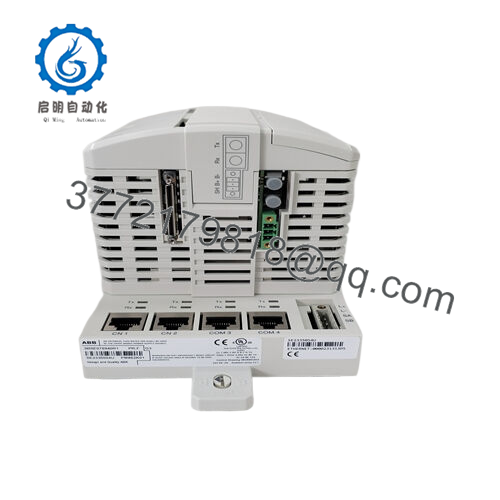
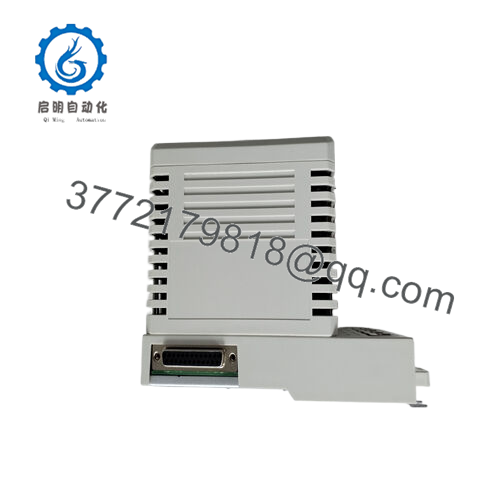
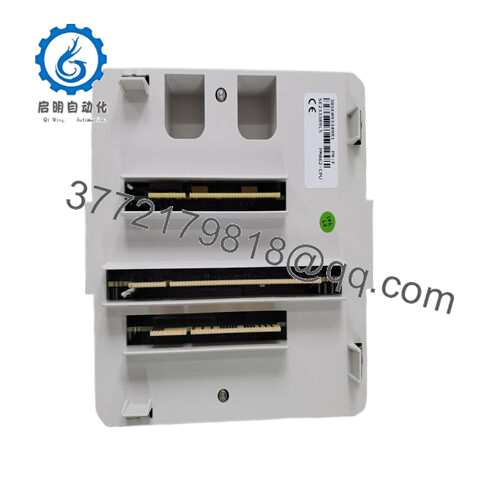
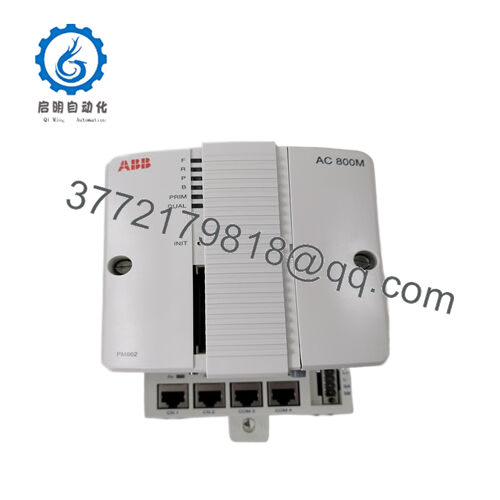
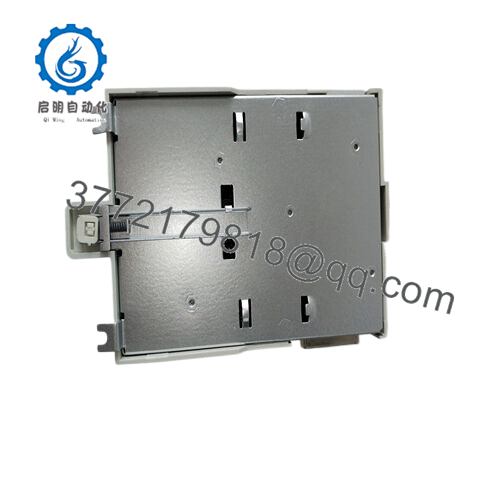
 WhatsApp: +86 16626708626
WhatsApp: +86 16626708626 Email:
Email:  Phone: +86 16626708626
Phone: +86 16626708626


